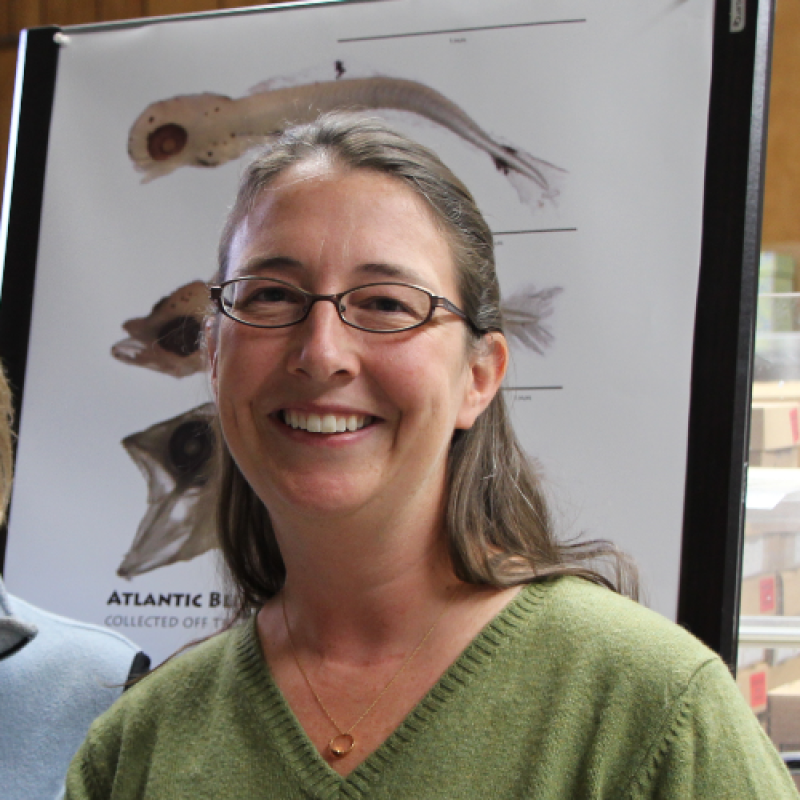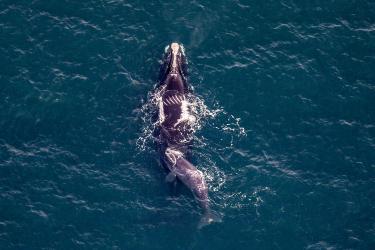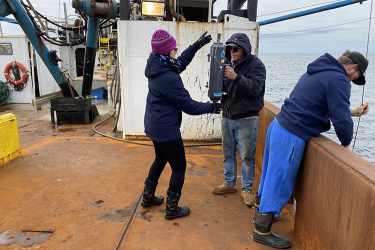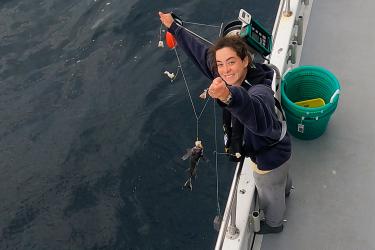Picture it—a lonely ship, miles from shore, horizon in every direction,
“Puffin! Puffin!”
I run to the port side and stare intently at the sea.
There were five of us on the bridge of NOAA ship Henry B. Bigelow that morning. Allison Black and Nick Metheny—our sea bird, marine mammal, and sea turtle specialists—scanned the horizon keeping species counts as we transited to the next station.
During the winter survey, I spent most of my free time on the bridge, hoping to see whales and learning how to spot sea birds. I’m notoriously bad. I joke that there are two species: penguins and not-penguins. It’s a bad joke. I’m learning. An Atlantic puffin would be pretty cool to see.
Allison’s keen eyes tracked the bird across the water’s surface. She and Nick had seen a couple puffins this trip already. I kept missing them.
We tend to think of birds flying south in the winter, but for many birds, the waters off New England are south!
There are many sea duck species that are only seen in the United States when they hang out in the offshore waters during winter months. Winter EcoMon gave us a rare opportunity to observe and count sea ducks. We saw white-winged scoter, black scoter, and red-breasted merganser during the inshore portion of our track.
I tried again that afternoon. Nick pointed at something close to the ship. And this time… I saw it! A small bird, compared to the gulls and gannets we’d been seeing, scurrying along, splashing in a line before taking off into the evening sky. Not the first winter EcoMon puffin. But, this one was mine.







